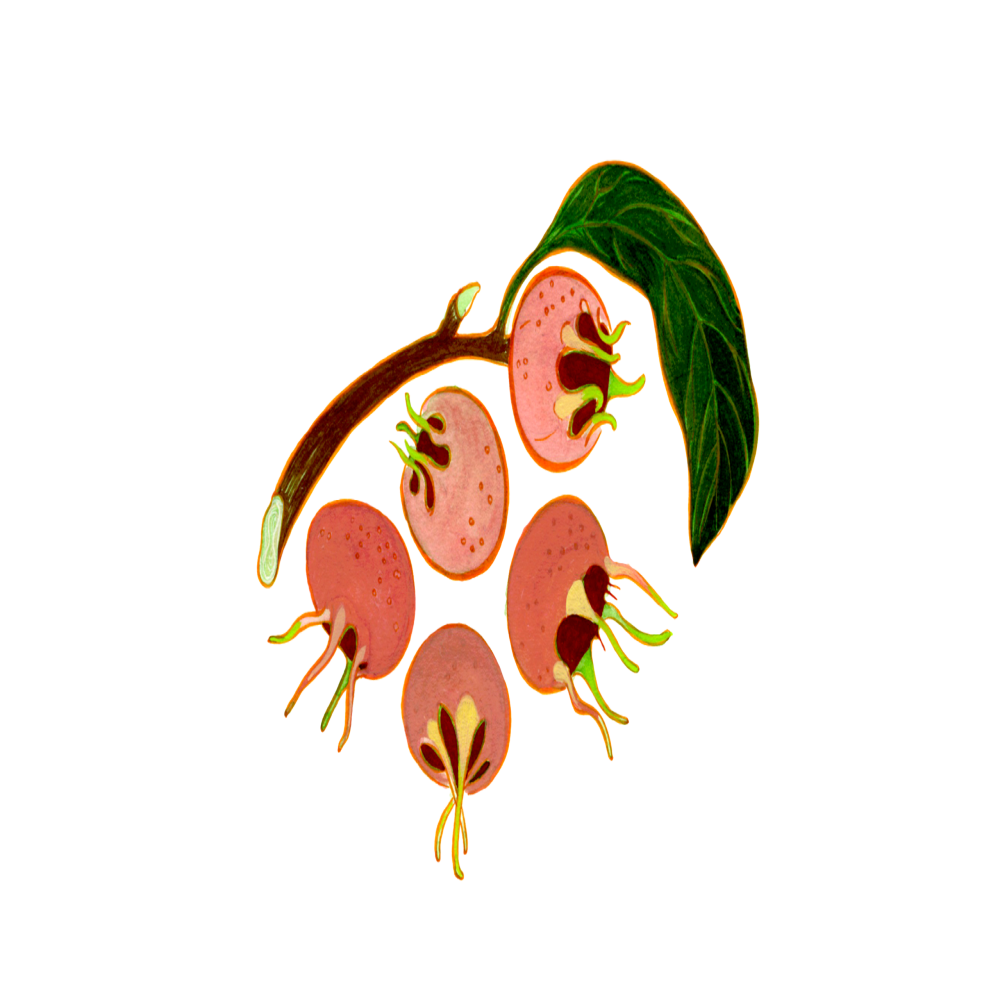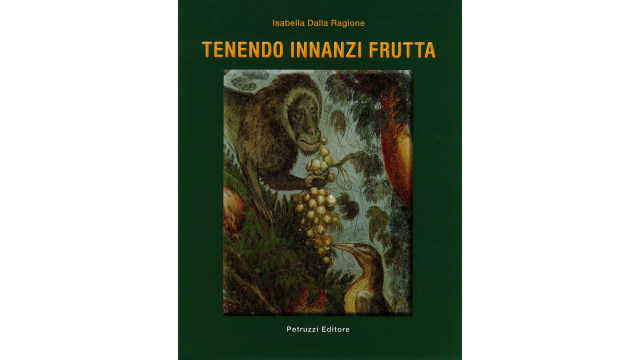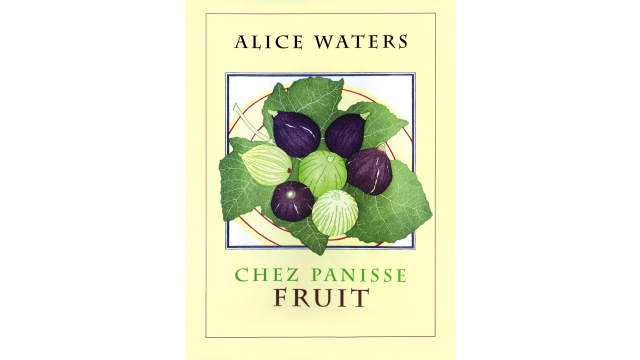Medlar

Latin name: Mespilus germanica
Uses: fruit, jam, alcohol
What are medlars?
Medlars are pomes, meaning they are cousins of apples, pears, and quince. As members of the Rosaceae family, they also count roses, hawthorn, juneberry, loquats, and crabapples among close relatives. The fruits resemble plump, red-brown rose hips, with five pointed sepals surrounding a star-shaped calyx at the blossom end. They cannot be eaten fresh off the tree, but must be allowed to age and begin decomposing, a process known as “bletting.” Enzymes in the fruit start to break it down, making the flesh soft, digestible, and delicious. Traditionally medlars were packed in straw or sawdust and left somewhere cool for a few weeks after harvest until they achieved this pudding-like texture.
Why are medlars healthy?
According to studies, Medlars provide a novel rich source of bioactive compounds, including phenolics, anthocyanins, organic acids, and minerals. Researchers have a heightened interest in medlars as a functional food, since they may protect against a wide variety of conditions associated with oxidative stress including heart disease, some cancers, and age-related degenerative diseases.
What do medlars taste like?
Once bletting is complete, medlars attain a beautiful balance between sweet and tart. Combined with almost tropical overtones of citrus and spice, medlars offer a unique flavor profile.
How do I use medlars?
Besides slurping up the soft, bletted fruit out of hand, you can also use a spoon to scoop out the gooey insides and add them to porridge, yogurt, or anything breakfasty from scones and toast to pancakes and waffles. Medlars make excellent jelly because of their high pectin content; like quinces, they’re also used to make a dense, jellied paste which is often eaten with cheeses.
What do medlars pair well with?
Pair medlars with anything you’d cook with apples: spices, other fruits, and dairy. You can also ferment medlars into cider or alcohol.
Where do medlars grow?
Medlars are native to the region stretching from the Black Sea coast through Western Asia into Iran, where they have been cultivated for thousands of years. The Romans loved them and spread medlar trees widely throughout the range of the empire; their tolerance for frost allowed them to thrive as far north as Britain and Germany. Despite their enormous popularity in Europe — especially Britain — from the Middle Ages through the nineteenth century, medlars are all but forgotten today. That may be changing, as enthusiasts advocate for the fruit and its distinctive qualities.
How to buy medlars:
If you can find them, chances are the grower has belted them for you, in which case you want them to be soft and fragrant.
Fun medlar fact:
Because of that suggestive calyx, medlars are not the prettiest fruit in the world. Add the fact that they need to be half-rotten before they’re eaten, and you can see why the fruit has historically enjoyed a somewhat mixed reputation. Though historically people loved the medlar’s flavor, there was no shortage of lewd nicknames for it, including “open-arse,” “monkey’s ass,” and many variations on that theme.



